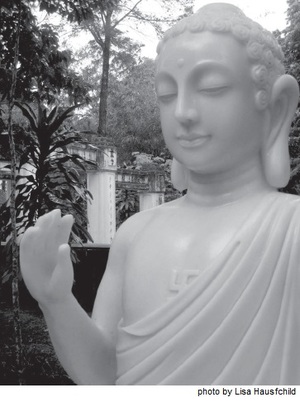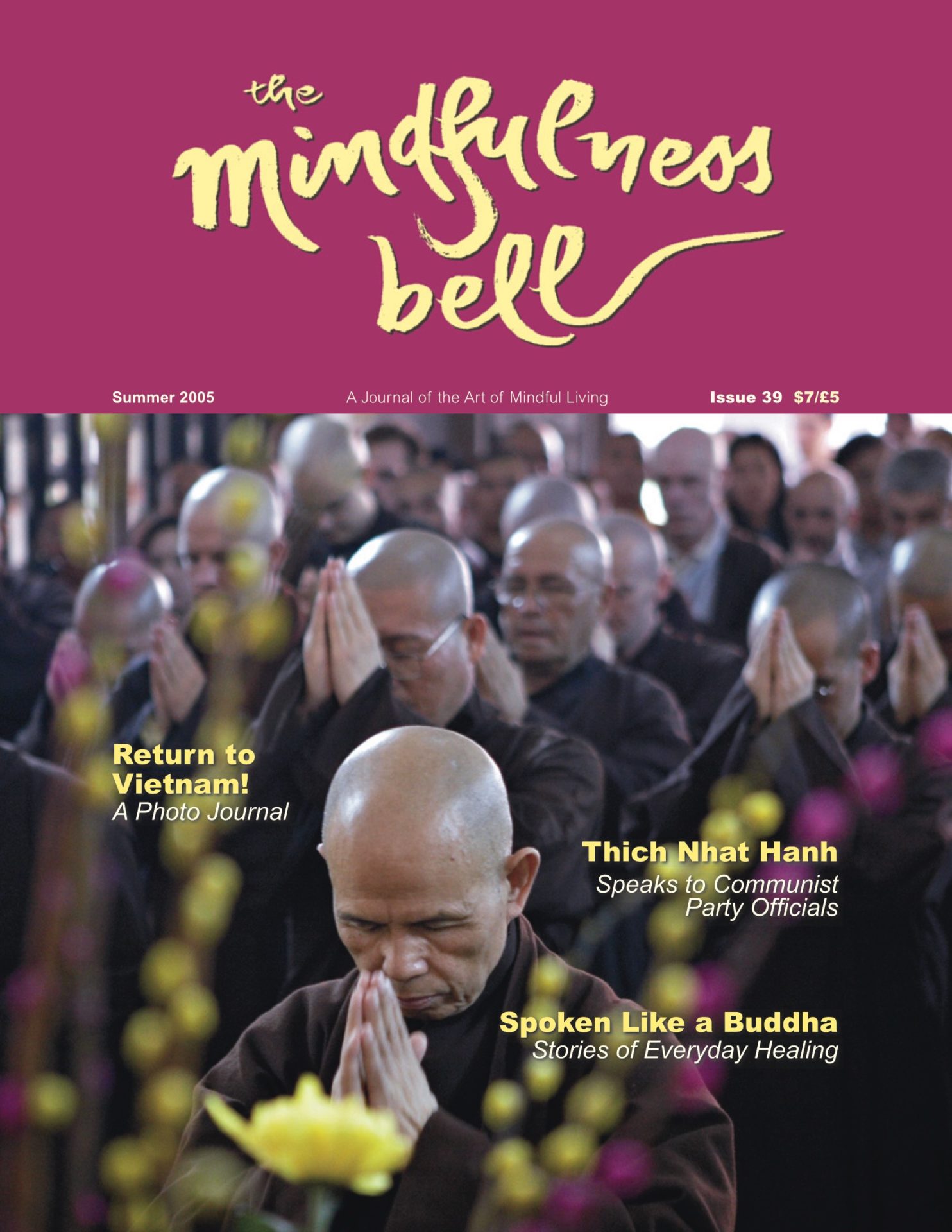Transforming an Addiction to Smoking
By Carolyn Cleveland Schena

At two o’clock in the morning I am wide awake and I really want to smoke a cigarette. I should be exhausted and sleeping soundly after being awake since five a.m. the day before, but I am not tired. I am thinking about everything under the sun, and yet nothing at all. The list of things that I need to do grows with each passing minute.
Transforming an Addiction to Smoking
By Carolyn Cleveland Schena

At two o’clock in the morning I am wide awake and I really want to smoke a cigarette. I should be exhausted and sleeping soundly after being awake since five a.m. the day before, but I am not tired. I am thinking about everything under the sun, and yet nothing at all. The list of things that I need to do grows with each passing minute. I wonder how I will get it all done. I really want to smoke a cigarette.
For years, smoking was the best way to solve my sleeplessness. Some time after college, when I decided to be a more “spiritual” person, I became ashamed of my smoking habit –– after all, I had never seen any statues of a smoking Buddha. But instead of quitting I crept into the closet with my nasty habit and maintained a healthy image. At night I had the freedom to express the other half of my life that I kept safely hidden, an addiction that I still could not admit I had. Over the years I became quite stealthy at sneaking outside for a midnight smoke, even when I was living in a house with six people.
There were three spots on the stairs that let out an evil creak when absentmindedly stepped on. I knew all of them by heart even in the pitch dark. The cold of the flagstone hallway was a minor irritation, compared to the silence that was secured walking in bare feet. The sliding glass door could be opened with the usual clunk and thud, but over many desperate-to-smoke nights, I had learned to open it with out a sound.
The third step was my perch, far enough down to be away from the windows for invisibility and off the ground enough to protect my naked feet from all those things that crawl in the night. With each inhale and exhale I watched my thoughts and the smoke swirl around me. Sometimes I would notice the stillness of the night, the moonlight dancing off tree limbs. Mostly I tried unsuccessfully not to think, and when I was sufficiently high from the nicotine I stumbled my way back up the stairs to bed, leaving the shame of addiction in the darkness.
Aware of Difficult Emotions
That practice went on for years and years. As my meditation practice grew steadier, my ability to look more deeply at the root cause of my actions and emotions also grew. Eventually I noticed that I was deliberately creating a smoke screen, a way of buffering myself from deeper emotions I did not want to feel.
The number of cigarettes I smoked slowly decreased as my ability to be more present with all of the thoughts and feelings that arose in the stillness of the night increased. I began to see that the late night urges for smoking reflected the intensity of the day. At midnight, when the world was stopping and resting, my mind and body were racing and greeted the silence like a train wreck. I was trying to lessen the impact of the crash with a buffer of smoke.
Mindfulness has given me the tools to embrace difficult emotions. I learned that I didn’t have to run away from what I perceived as difficult or overwhelming. I began to see that what I most resisted never left; it just sat there waiting for my attention with great persistence and would still be there, even after the nicotine buzz had worn off.
The midnight secret smokes were a relief from the stresses of the day and they were my own secret pleasure. In the beginning, I enjoyed them, even though they fueled the conflict of who I was in the world. Was I the wholesome, hard-working spiritual type that people perceived me to be, or a just confused girl with a closet addiction? I could not humble myself to admit to friends and family that I did not have the strength to overcome a habit that I found disgusting. I chose instead to live in denial; if no one saw me smoke then I did not have to see myself as a smoker either.
Even in a metropolitan area of over a million people, loneliness permeated my existence. I could not be with anyone because I could not be who I really was. I was ashamed of my secret, so I kept myself away from others. I left parties early in order to sneak away to smoke. I walked home alone to indulge my habit. I was sure that I could not reveal who I really was, because I believed that the friends and colleagues who admired me would certainly abandon me if they knew. Even though I desired to live with my heart wide open and to have the kind of joy that is present when true intimacy is alive in relationship, I could not let go of the one thing that was stopping me from bringing that into my life.
The suffering of giving up my one or two cigarettes a day was greater than anything I could dream of replacing it with. So I continued smoking. And pretending not to.
When I was in environments where smoking was not the norm, I would begrudgingly let go of my midnight habit for the few days or weeks that were necessary to keep up my image. It was during those times that I began to see that the smoke-free me carried a more open and joyous heart that was not only attractive to me, but to those around me. However, once I was back at home, the habit of smoking and the relief that I perceived it brought me were too strong, so once again I would re-enter a cycle of shame and self deprecation when I lit up the next cigarette.
This cycle continued for years. And it took a few more years before I learned to have compassion for myself and be happy that I no longer smoked fifteen cigarettes a day, that one or two cigarettes was my only struggle. I began to be able to laugh about the absurdity of the need to have just one cigarette. I also shared openly with friends about my habit and was surprised each time my friends did not respond with criticism. I was laying more blame and shame on myself than anyone else ever could. Eventually I came to accept that I was a smoker, and once I did this I was able to stop smoking. After all, I could not give up a habit if I didn’t even admit that I had one.
Breathing to Let Go
At two-thirty a.m. my mind has been churning for a good thirty minutes. I laugh out loud with the wonderful realization that I have been thinking. As Sharon Salzburg says, “the miracle of mindfulness is the moment when we realize we are thinking.” And then I begin doing what worked at six a.m. earlier today day when the dog barked, and at noon when my boss demanded a meeting with me, and at four p.m. when I was cut off in traffic. I follow my breath.
Lying with my back flat on the mattress, I place my hand on my belly and drink in my in-breath, feeling every morsel of it as it enters in to my body through my nose. A thought arises, and I bring my mind back to my breath and slowly smile as I take in another deep breath. And then I watch the desire to smoke a cigarette dissolve.
Before practicing mindfulness, my idea about smoking was simple—it was bad, and I should quit. Mindfulness has given me the ability to see smoking not as bad or as good—it is just smoking. Looking deeper I can see all the reasons, all the causes and the conditions that I created in order to allow me to light up a cigarette. I can also see all the causes and conditions that now allow me not to. When I choose not to smoke, I am choosing to be fully present with life and every emotion and feeling it has to offer. Pleasant or not, I am grateful that I can experience them. And then it occurs to me: maybe that is why I have never seen any statues of a smoking Buddha.

Carolyn Schena, Peaceful Flower of the Heart, practices with the Island Sangha in the Outer Banks, North Carolina. She and her husband Gary own Studio 12, where they create ceramic works of art and inspire others to do the same.

